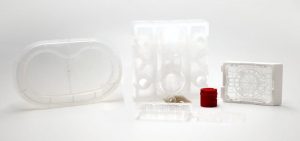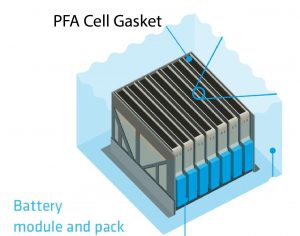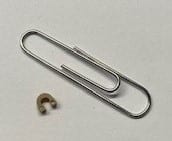FEP Uses in Semiconductor Manufacturing
September 6, 2022 | Blog, FEP & PFA Materials Blog, Industries Blogs, Materials Blogs
Fluorinated ethylene propylene (FEP) is a copolymer of hexafluoropropylene and tetrafluoro ethylene that is chemically resistant, electrically stable, insulating and possesses useful low shielding properties. It is easily formable and was developed as a melt processable material.
Semiconductors are the brains of electronics, enabling advances in countless applications and emerging technologies. The application of semiconductor devices can be found in almost every technology today, ranging from cars, phones, computers and much more. The manufacturing of semiconductors and semi-conductor related products require reliable, high purity materials that can survive harsh operating conditions. The correct solution can increase production efficiency, reduce power requirements and increase process reliability.
FEP coatings are well suited for applications in the semiconductor industry where they are used in the manufacture of wafer carriers, sensors, seals, fittings and pump parts which are optimal for transporting high-purity chemicals in semiconductor manufacturing.
Key Material Properties for Semiconductor Applications
- Reliable mechanical performance
- Low levels of total organic carbon
- High performance in pure deionized water
- Low permeation rates
- Resistance to both dry and wet process
For more information on FEP uses in Semiconductor manufacturing, please contact Rich Reed, Vice President of Sales & Marketing at 513.321.8404 or [email protected]







 For four decades, Performance Plastics has been delivering the highest quality custom plastic injection molding solutions in the industry for our customers. We take a highly specialized and consultative approach, working closely with our customers to develop the solutions needed to solve the most complicated issues.
For four decades, Performance Plastics has been delivering the highest quality custom plastic injection molding solutions in the industry for our customers. We take a highly specialized and consultative approach, working closely with our customers to develop the solutions needed to solve the most complicated issues.




